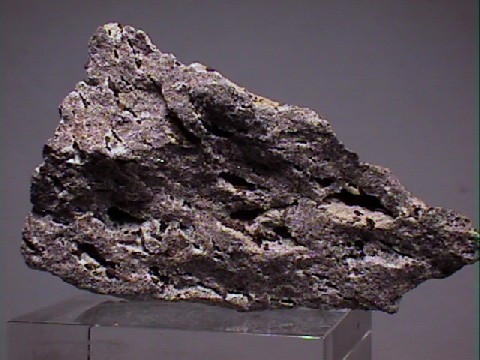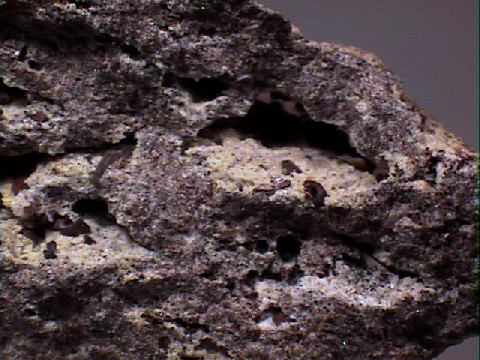 THE MINERAL HYPERSTHENE
THE MINERAL HYPERSTHENE
- Chemistry: (Mg, Fe)SiO3 , Magnesium Iron Silicate.
- Class: Silicates
- Subclass: Inosilicates
- Group: Pyroxene
- Uses: As mineral specimens and there is an ornamental variety
Specimens
Hypersthene is a relatively common mineral and is found in igneous and some metamorphic rocks as well as in stony and iron meteorites. It forms a solid solution series with the minerals enstatite and
Hypersthene is an orthopyroxene or a pyroxene with an orthorhombic symmetry.
At high temperatures, hypersthene's structure changes to a structure with a monoclinic symmetry, a clinopyroxene or more specifically,
Hypersthene has an ornamental variety. A weathered variety that has a submetallic luster and a bronze like color is called "bronzite". It is sometimes used as an ornamental stone. Both enstatite and hypersthene contribute to the bronzite variety. Some hypersthene is seen on the gemstone markets but is not well known.
The name hypersthene is from the Greek and means "over strength". It is in allusion to its greater hardness than the amphibole mineral hornblende, a mineral with which it is often confused.
PHYSICAL CHARACTERISTICS:
- Color is gray, brown or green.
- Luster is vitreous to pearly. Weathered specimens can have a submetallic luster ("bronzite").
- Transparency: Crystals are generally translucent and rarely transparent.
- Crystal System is orthorhombic; 2/m 2/m 2/m
- Crystal Habits include rare individual crystals that have a stubby prismatic habit. More typically massive or in coarse lamellar or fibrous aggregates.
- Cleavage is perfect in two directions at nearly 90 degrees.
- Fracture is uneven.
- Hardness is 5 - 6.
- Specific Gravity is approximately 3.4 - 3.9+ (above average for non-metallic minerals)
- Streak is white.
- Other Characteristics:
Index of refraction is approximately 1.69 - 1.77. - Associated Minerals include iron and stony meteorites, olivine, biotite, quartz, feldspars such as labradorite and certain types of garnets such as almandine.
- Notable Occurrences include the North Creek, New York, USA and Labrador, Canada.
- Best Field Indicators are color, crystal habit, hardness, cleavage, index of refraction and luster.



